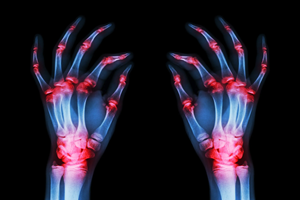In the realm of medical research, the integration of advanced technologies has ushered in a new era of precision healthcare. Among these cutting-edge tools, machine learning (ML) algorithms stand out as formidable assets in predicting and managing various health conditions. A recent study published in Nature Scientific Reports sheds light on the promising role of ML in predicting osteoporosis among patients with rheumatoid arthritis (RA), offering insights that could revolutionize clinical practices.
Led by Chaewon Lee and colleagues from Kangwon National University in South Korea, the study addresses a critical gap in existing research by focusing on the application of ML algorithms specifically tailored to the unique characteristics of RA patients. While ML has been extensively employed in diverse clinical settings, its potential in predicting osteoporosis among RA patients remained largely unexplored until now.
The researchers evaluated four representative ML algorithms — logistic regression, random forest, XGBoost, and LightGBM — leveraging the distinct advantages of each to develop a robust predictive model. Through meticulous analysis and fivefold cross-validation, they assessed the accuracy, F1 score, and area under the receiver operating characteristic (AUC) curve of each algorithm using clinical data obtained from 2,374 adult RA patients enrolled in the Korean Observational Study Network for Arthritis.
The findings underscored the efficacy of ML algorithms in predicting osteoporosis among RA patients, with notable variations in performance metrics across different models. The XGBoost algorithm emerged as the top performer in terms of predictive accuracy, while random forest exhibited the highest F1 score. Moreover, logistic regression demonstrated superior overall performance, underscoring its potential as a reliable tool in clinical settings.
In addition to conventional risk factors such as age and body mass index (BMI), the ML model identified novel predictive factors including monthly income, education level, surgical history, and marital status. This multifaceted approach not only enhances the predictive capabilities of the model but also offers valuable insights into the complex interplay of socio-economic and clinical factors in osteoporosis risk assessment among RA patients.
The implications of these findings are profound, signaling a paradigm shift in the diagnosis and management of osteoporosis in RA patients. By harnessing the power of ML, healthcare practitioners can leverage data-driven insights to optimize treatment strategies and mitigate the risk of fractures and skeletal complications in this vulnerable population.
Furthermore, the study underscores the transformative potential of ML in augmenting clinical decision-making processes, paving the way for personalized and targeted interventions tailored to individual patient profiles. As healthcare continues to embrace innovation, collaborations between researchers, clinicians, and technology experts will be paramount in unlocking the full potential of ML in improving patient outcomes and advancing the frontiers of medical science.
In conclusion, the study by Lee et al. heralds a new era of predictive analytics in rheumatology, demonstrating the invaluable role of ML algorithms in predicting osteoporosis among RA patients. With further refinement and validation, these findings hold the promise of revolutionizing clinical care, ushering in a future where precision medicine is not just a possibility but a tangible reality for patients worldwide.
healio.com - Justin Cooper












